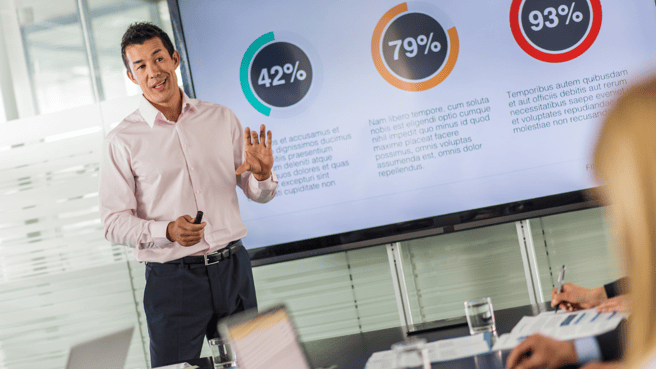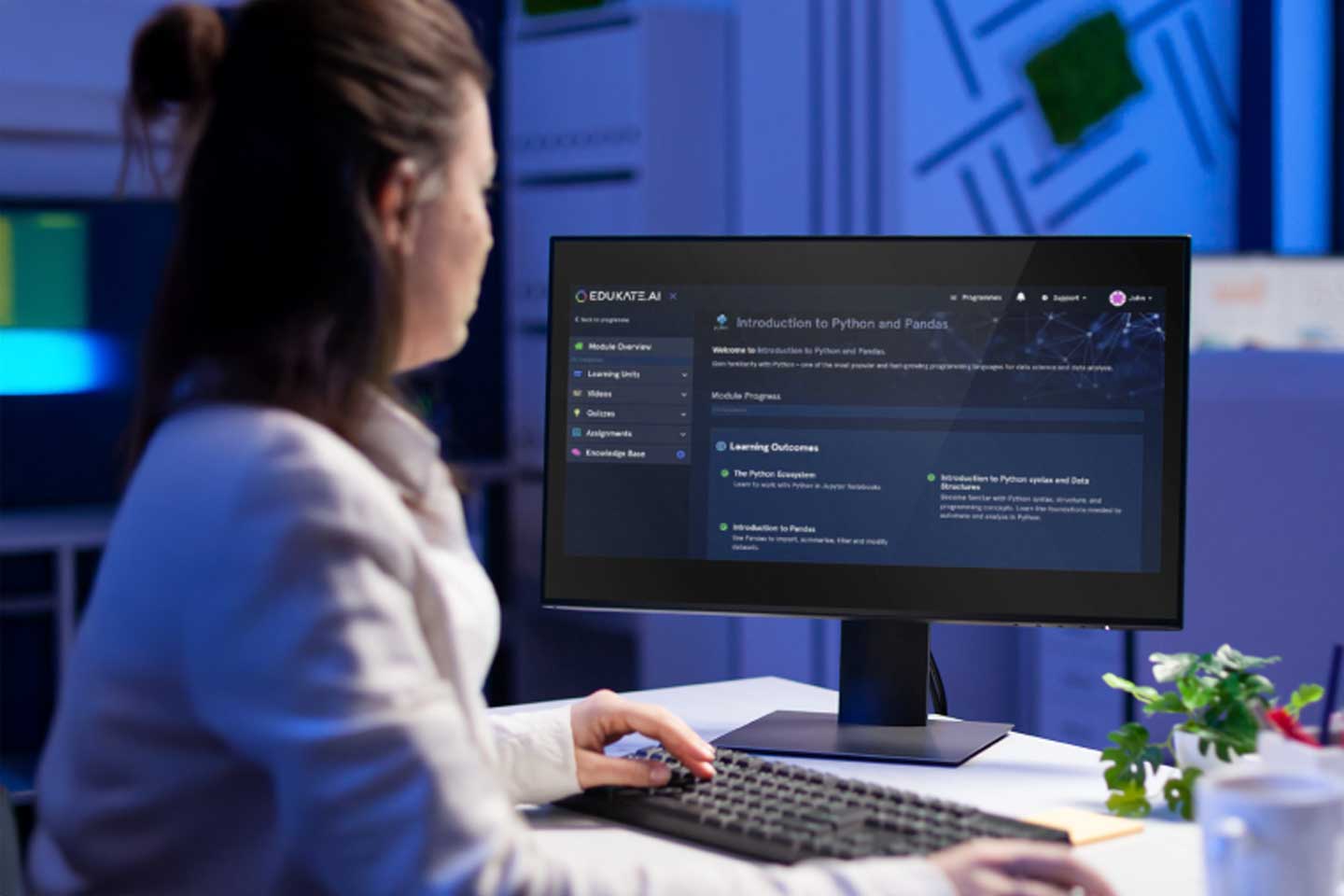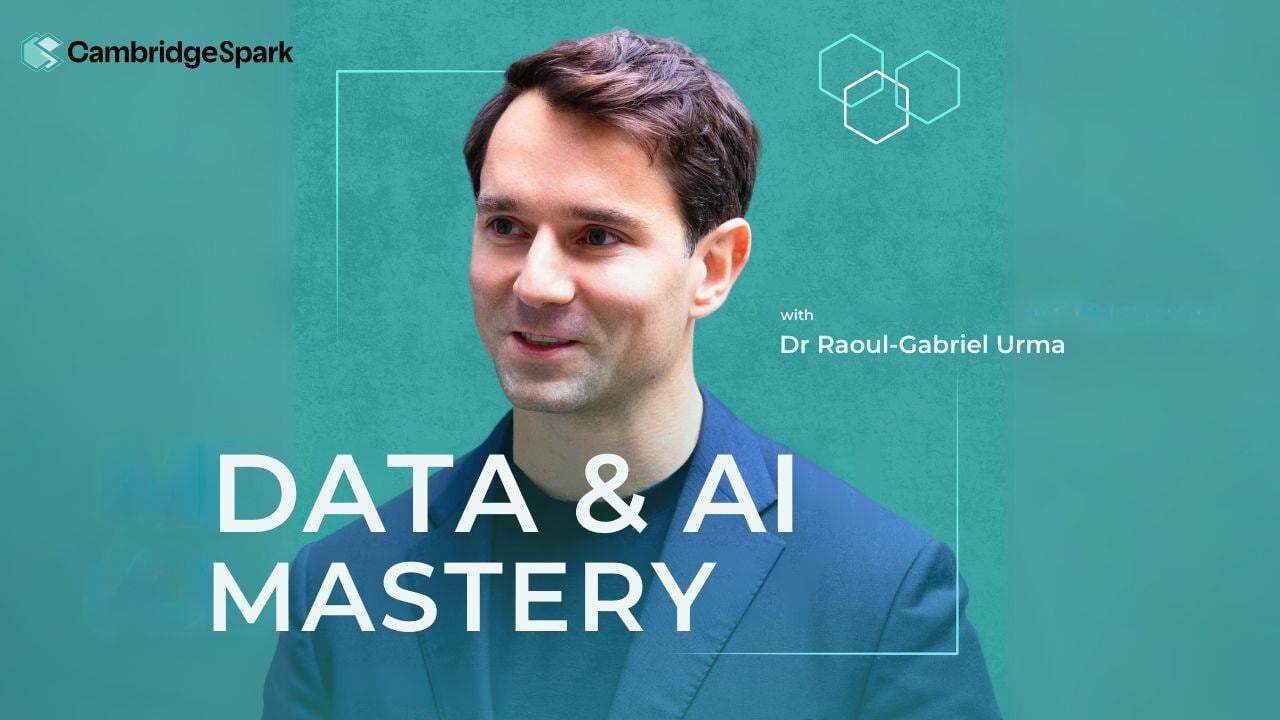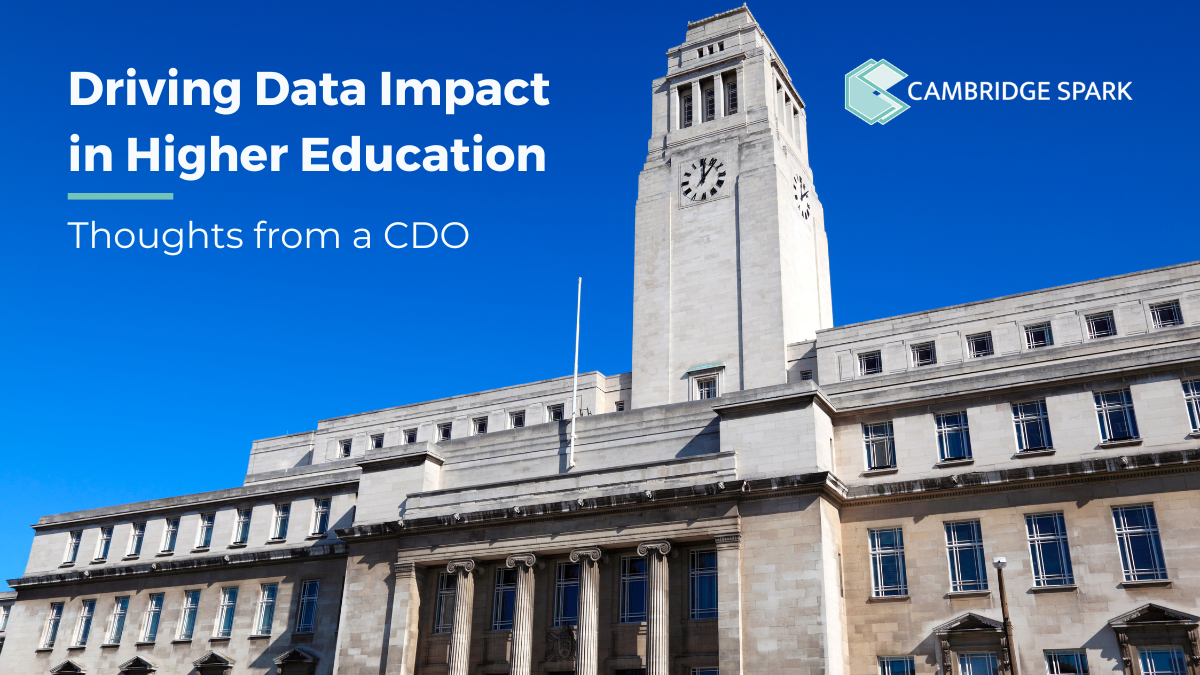 Universities have a wealth of data available that can be used to improve enrolment, profitability, student experience, and many other key performance indicators. One example is Northeastern University, which improved its U.S. News & World Report ranking among national universities from 115 in 2006 to 40 in 2017 in large part due to insights collected from enrolment data it analysed.
Universities have a wealth of data available that can be used to improve enrolment, profitability, student experience, and many other key performance indicators. One example is Northeastern University, which improved its U.S. News & World Report ranking among national universities from 115 in 2006 to 40 in 2017 in large part due to insights collected from enrolment data it analysed.
But what are leaders at institutes of higher education actually doing to drive this kind of impact with their data?
To answer this question, we connected with Monica Jones, the Chief Data Officer of the University of Leeds, to share her experience about how universities are building a data strategy to successfully drive value.
Could you tell us a bit about your journey as a data professional leading to your current role as Chief Data Officer of the University of Leeds?
Monica Jones: I have worked in IT and Informatics for the last 20 years really. Prior to that, I was a British Army officer, and I'm a teacher by profession. I specialised in information systems and then I worked for the NHS for a number of years.
I've done a variety of roles working at a national, sort of regional, and local level. So I’ve been the CIO of an acute trust on the front line of the NHS, and I’ve got the battle scars from that. But also I've worked for the NHS Information Centre, which was the precursor to NHS Digital, and concentrated on the data standards and healthcare informatics until about 4 years ago.
From there, I started working for the University of Leeds, as Chief Data Officer of Health Data Research UK. The university recognised that it needed a chief data officer and that we needed a data strategy and everything that goes with it. So I was approached to see if I'd be interested a year and a half ago and I said, “yes”.
So that's the journey so far. I've taken my skills and experience to focus around data and how to capitalise on that.
What does it mean to have a data-driven culture in Higher Education, and why is it important?
Monica Jones: For academics who work in higher education, most of their lives are centred around providing evidence base for publications and teaching. Essentially, you need to be able to prove that what you're saying is actually the truth.
It's only a small step to then take that sort of principle—whether you're doing it for teaching or for research—into everything else that you do within higher education. Running a university requires data. All of your student lifecycle requires an underpinning sort of evidence base. And all the research side of things relies very much on data.
So I think providing that evidence base and being able to actually have confidence in what the data is showing you gives you informed decisions. I like to use the term, actionable insight. You start going down that continuum, from data to information and from knowledge to wisdom. You are able to get to the no-brainer kind of decision from that actionable insight because the data is telling you that's strategically and economically the right thing to do.
If you've got the mechanisms in place to make those data-driven decisions, then you're less likely to make mistakes, and it just reduces the risk. I think we’ve embraced that because that sort of mindset and the culture is inherently there in everything that we do.

What are some examples where you’ve seen the benefits of using data to inform decision-making in universities?
Monica Jones: The student of today is a much more discerning customer than that of many years ago. They are expecting value for money. So being able to provide the right courses and understand and respond to the learner experiences is important.
We've had a student lifecycle programme running for a few years now that collects data at every stage, from the initial application, to student exams, coming to the university and going through their undergraduate, postgraduate or postdoc training. Then it’s collecting data from an employability perspective, almost as a route to market.
We’re essentially looking at things in that way as a pipeline. University of Leeds quite often comes out near the top of the best universities for the student experience. We're pretty proud of that because we're actually listening and responding to what our customer needs are. So I think that's one example.
We recently published our global strategy when our new vice chancellor, Simone Buitendijk, arrived a couple of years ago. She brought with her some very ambitious aims that we published within our overarching 10-year strategy.
So, in order to be able to say we're meeting that, we've created a number of KPIs and and we’re monitoring those through our business intelligence and data analytics service to ensure we’re delivering what we said we were going to deliver in those global ambitions.
At an operational level, we're putting the checks and balances in place and have a balanced scorecard that actually shows we’re on track, and these are the immediate benefits we’re giving back to our staff, students, researchers, and academics. So that is a second example.
What steps must universities take to successfully develop a data-driven culture?
Monica Jones: I was in a fortunate position in that my role was a new one. So I basically said there are three things we need to do in order to succeed:
1. Design a data strategy
So this fits into our overarching global specialty, in particular, our data transformation investment. So the university has committed £76 million over five years to complete digital transformation. So designing the data strategy was the first thing that I needed to do. But also I needed to speak to a lot of people to find out what was working and what wasn't working.
2. Establish a central data service
Carrying out the data strategy is a major undertaking, and the CDO can’t do it alone. So we needed to have a recurrent budget in order to have this central team of approximately 14 people whose day job is to do data governance and quality, data engineering, modelling, integration and service management.
There are 125 people who have “data” in their title across the University. So it's very much a hub-and-spoke kind of approach. But the central data team serves as a friendly one-stop shop that people can approach for help and support to actually provide those services.

3. Allocate funding for implementing the data strategy
The university is invested in a digital transformation programme over a five year period. A few million pounds for that is invested in developing data transformation. Firstly an integration platform. So instead of doing point-to-point integrations and burning up a lot of resources and potentially creating technical debt, we can all get to a point where it's plug and play with a proper central data repository. We will have a minimum viable product delivered by the end of this year.
Can you say more about the “hub-and-spoke” model for data service in academia?
Monica Jones: So we have seven faculties across that the University of Leeds. There are staff who have specialist roles within those faculties, within departments, and within schools. But there are also some programme-related staff, such as in our student lifecycle programme and our corporate processes and systems programme. And then there are data analysts or data modellers who sit within those programmes.
But essentially their home department is the office of the CDO. So for their continuous, professional development, and to remain amongst their peers, they are fully deployed out into those hubs but are still reporting to the centre. That's a good way of people feeling that they've got the right staff and that they know who they are. It's not this sort of anonymous or distant, arms-length kind of service. But actually everyone is aligned with the same direction of travel.
So it's about CPDs, training, and education. It is also about bringing people on board and not just doing this in isolation. The different roles are a lot more connected. There’s less duplication as well because before adopting this model, there were a lot of people who were doing the same thing in each of those faculties but actually not necessarily talking to each other or joining up.
What are some common barriers that universities face when trying to implement a data strategy, and how can they overcome them?
Monica Jones: I think it's about demonstrating what's in it for them. There will always be some resistance to change. A lot of people like doing things the way they're doing them, and they feel comfortable. They know what their day job is and don't necessarily want that kind of disruption.
But actually demonstrating where it perhaps is not working and where it's costing them a lot of resources or pointing to constraints that are keeping them from being able to do certain activities can help to overcome their initial resistance to change.

As an example, prior to this programme of work, there wasn't any kind of central, warehousing function. So people would go to our core systems, run queries against them, and then put the data into spreadsheets or, at best, an access database. They would then spend a lot of time doing the data wrangling, the curation, and cleaning up the data for a very specific purpose.
And that burns up a lot of time and effort. Preparing and cleansing data can take up to 60% of an analyst’s time before they can even then do their analytics. And of course, we weren't then feeding that back into our core systems.
Whereas, by having a CDR, you’ve got this flow going through, and you've got all of that data engineering that creates a feedback loop. And the closer you get to the source of entry, the better quality is going to be. So it massively improves the data quality and the source of entry.
And that feeds into the previous question about data-driven decisions in that people then know that they can trust the insights coming out at the other end because you've got that feedback loop. It's when you don’t know how many people have got their fingers in the pie or what transforms are happening that lead to a distrust of the data and the insights.
Instead, you can use the technology to demonstrate you have this fantastic, rich, asset as a resource. And then you can do a whole host of analytics, business intelligence, machine learning, and even develop an AI because you've got the visibility of where it's going, and you can act much more quickly.
How can universities ensure they’re collecting and analysing the right data to make informed decisions?
Monica Jones: It's an interesting point. There are core systems. We've all got to report to someone, whether that’s through government regulatory reporting, to other institutions, or to funders. So the specification associated with those is pretty clear. You've got to embed within your data capture systems the right data elements in order to be able to run those reports, produce the regulatory reporting and essentially get funding.
In another sense, it’s about recognising the balance between trying to capture everything and being very business focused. So when there are real business needs that come in and people need to be able to run a particular set of analytics, you need to be sure you’ve got the right change control mechanism to actually add that into your core system.
Whether that’s a teaching platform, the software you use for HR or payroll, or research systems, you need to do proper business analytics, have that upfront design, and decide on the specification in order to make sure that it flows to the system. You don’t want to end up creating little online forms, spreadsheets, and disjointed ways of capturing different data that you haven’t got a clear idea of what’s happening. Again, it's about investing in your core systems to do that.
How can faculty and staff be trained to effectively use data in their work? How do you see the role of apprenticeships in meeting this need?
Monica Jones: Some of it is about data literacy and making sure that people actually understand data principles and how to use data effectively. And from an information governance perspective, we have mandatory training so that everyone understands data protection and what regulations they've got to adhere to.
But that's only one little bit of it. We also run much more interactive, hands-on training in short modules and courses where people can learn about data science in detail.
Having apprenticeships where people can come in and actually learn on the job is really useful. It's a great way for them to get the skills and the knowledge whilst being paid and also then progressing pretty quickly up the career path to immediately becoming an asset for the university. And certainly with all the apprentice schemes that I've been involved in previously—not just at the university but in the NHS, too—we’ve invariably given jobs to all the apprentices we’ve brought in through the levy and afterwards because they learn very quickly, and they're already familiar with the system.
So I'm a huge advocate of apprenticeship schemes, both for developing early careers and for people changing careers. Having role models, having coaching and mentoring, and helping people to be able to manage their own career path and doing some broad, competency-based training are all strings to your bows. That's what we employ here, and that's what I've always done.

Can you offer any other examples of how data has been used to improve operations, teaching, and learning in universities?
Monica Jones: We were all needing to use real-time data during the pandemic to inform how we were reacting to it. In my previous role as CDO at Health Data Research UK (HDR UK), we had access to the national trusted research environment through NHS Digital. The university and Leeds Teaching Hospital are both joint data controllers of those data.
So we could see how the pandemic had affected cancer pathways, in particular. We saw a drop off in two-week referrals by 70% and a drop in attendance for chemotherapy and radiotherapy of about 40%. And we recognised that the data being used previously was just too slow. So we set up a real-time data network with colleagues across Birmingham and UCL.
Working through the university, our analysts worked on those data to understand what needed to happen to kickstart cancer services. We did some detailed data modelling on 3.5 million patient data points and we demonstrated that there would be an excess of between seven and 17,000 cancer deaths in the first year of Covid-19.
So that basically saved lives. That analysis that we did at the University of Leeds with other colleagues across HDR UK basically lobbied the government and said, “Look, this is the effect if you don't restart these cancer services, this is solid evidence that all these extra people are going to die.” So bringing those insights to light is what I feel proud of having done through the pandemic.
How can universities ensure that they are using data ethically and responsibly?
Monica Jones: We essentially need to be compliant with GDPR and Data Protection Act, 2018 in everything that we do. As I mentioned earlier, everybody has mandatory IT training. Every single project will have a data protection and impact assessment done on it. And we have big sharing agreements in place when we are working and collaborating with other institutions for research purposes.
So using data ethically and responsibly is about having all of those checks and balances in place. I've developed the data service at the centre of the data strategy and data governance operating model. That then links up with our university executive group. I've convened a data design authority to ensure we're compliant with our data principles and that we work with our secretariat who have the legal responsibility through our data protection officer of monitoring and assurance.
Every project, programme, and business owner of data has a responsibility to work with the data controllers and data processes to ensure that everything they're doing is ethical and responsible. If there are specific projects or programmes that involve confidential data, then there needs to be an ethics committee getting that ethical approval. Those are all formal processes that universities do all the time to make sure that everybody knows and understands their personal responsibility, as well as their institutional responsibility.
--------




